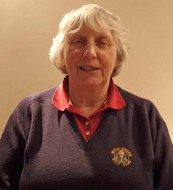Chapter 3 E-materials
Author profiles
Case Study 1: Post traumatic back pain
Background
• The patient fell from a ladder and sustained a crush fracture of L3 with no associated spinal cord injury.
• He was immobilised for 6 weeks in a rigid brace and was taken out of the support for exercise.
• He demonstrated fear avoidance behaviour and was reluctant to move at all.
• He agreed to aquatic physiotherapy after it was explained to him what this would entail.
• There were no contraindications to hydrotherapy, however excessive flexion was to be avoided.
Treatment outline
– The patient commenced aquatic therapy standing in water to a depth of T11 performing slow head movements of flexion and extension.
– Therapist turbulence (created by the therapist with their hands) was applied at waist level to further challenge core stability.
– The patient progressed to standing at the rail and performing alternate hip flexion/extension to encourage spinal movement, and trunk rotations (free movement).
– Rhythmical stabilisations for trunk flexors, extensors and rotators were added to transversus abdominis setting and were performed by the physiotherapist applying pressure at the shoulders and pelvis while the patient resisted the pressure.
– As the patient improved in mobility and strength, work at the rail was introduced to increase trunk extension and flexion (the patient held the rail with elbows extended and walked their feet back to stretch the spine into extension, this was followed by walking the feet forwards to increase flexion).
– In supine lying, buoyancy counterbalanced side flexion movements were added, along with transversal rotations into flexion and extension. For this exercise the patient held a float in each hand and flexed and extended their neck rolling it backwards and forwards.
– The exercise was started with small pendular movements and gradually progressed to a fuller swing.
– Longitudinal rotations, with the patient lying supine and turning the head from side to side were added to assist trunk rotation.
– Posterior to anterior mobilisations were applied to the lumbar spine with the patient supported in supine lying.
– Aerobic conditioning work was commenced using exercises such as “spotty dogs” (alternate leg and arm movements in the water), full transversal and Saggital (side to side) rotations holding dumbbells, pushing and pulling, lunges with a kickboard and rotations using the elbows in the water to create resistance to movement “Helicopters”.
Stay updated, free articles. Join our Telegram channel

Full access? Get Clinical Tree














